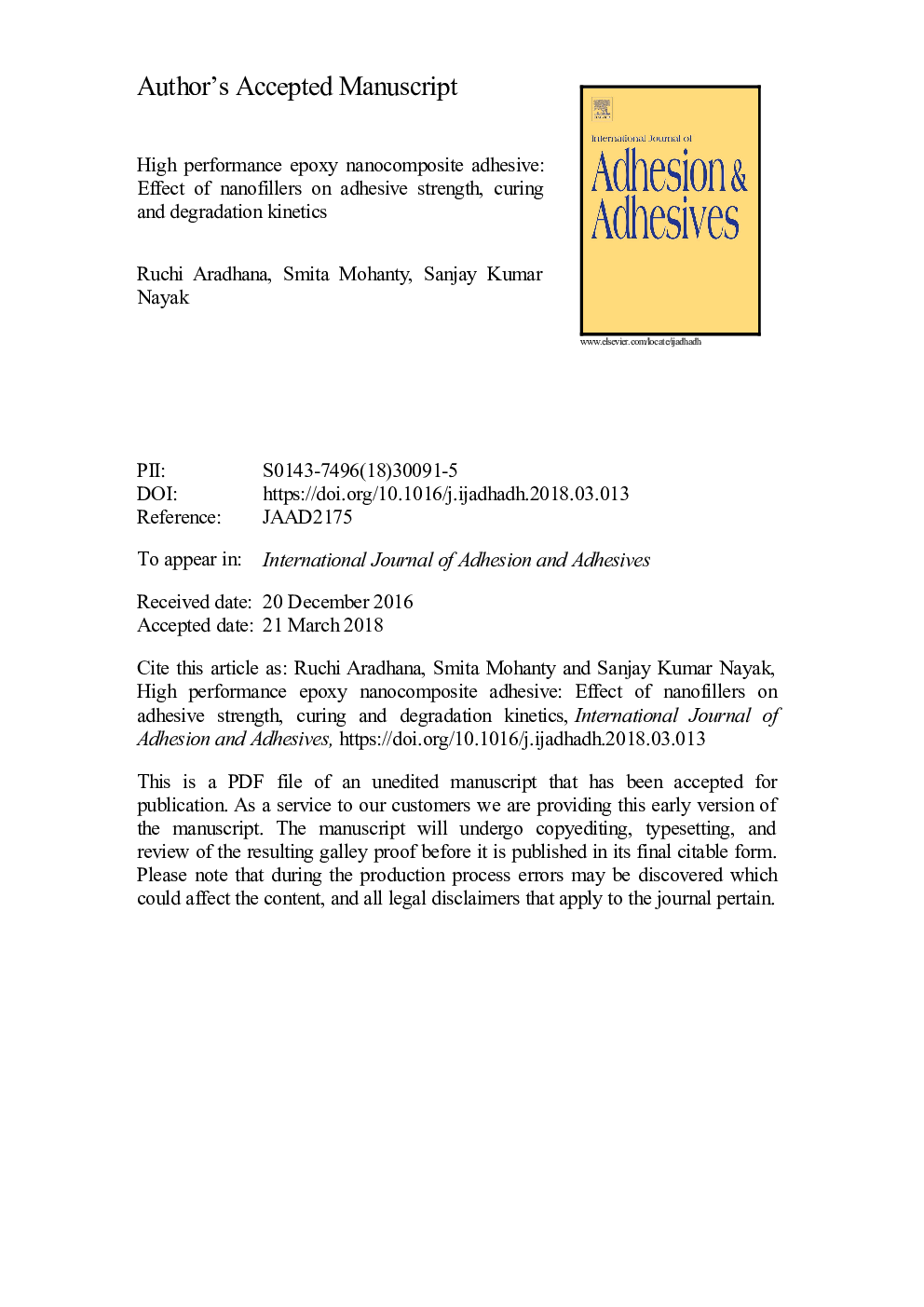| Article ID | Journal | Published Year | Pages | File Type |
|---|---|---|---|---|
| 7170906 | International Journal of Adhesion and Adhesives | 2018 | 36 Pages |
Abstract
In the current study, the synergistic effect of a multi-walled carbon nanotube (MWCNT) and a nanoclay (C30B) on the mechanical, morphological and thermal behaviour of an epoxy based adhesive was investigated. The adhesive strength was investigated by conducting lap shear tests and from the test results it was observed that, Ep/1.0 C30B adhesive possessed the highest adhesive strength among all the adhesive formulations investigated and showed a 52% enhancement as compared to the pristine epoxy. Fracture analysis of different adhesive systems was investigated using scanning electron microscopy (SEM). SEM micrographs revealed that nanomaterials with different shapes and dimensions provide distinct features on the fracture surfaces due to the different energy dissipation mechanisms which they promote. The morphological variations of the epoxy based nanocomposite adhesives were investigated using transmission electron microscopy (TEM) and X-ray diffraction (XRD) techniques. The curing kinetics of the different nanofiller reinforced epoxy adhesives were examined using a non-isothermal differential scanning calorimetric (DSC) technique. The activation energy (Ea) was calculated by applying Kissinger's method and found to be increased for the Ep/1.0 CNT/1.0 C30B adhesive system as compared to the pristine epoxy. This increment can be attributed to the physical impediment impacted by the nanomaterials on the curing reaction of the epoxy resin. The degradation kinetics of the adhesive systems were also studied using thermogravimetric analysis (TGA). The corresponding activation energies (E) of the adhesive systems obtained by Kissinger's model were found to increase with addition of nanofillers, thus indicating improved thermal stability.
Related Topics
Physical Sciences and Engineering
Engineering
Mechanical Engineering
Authors
Ruchi Aradhana, Smita Mohanty, Sanjay Kumar Nayak,
